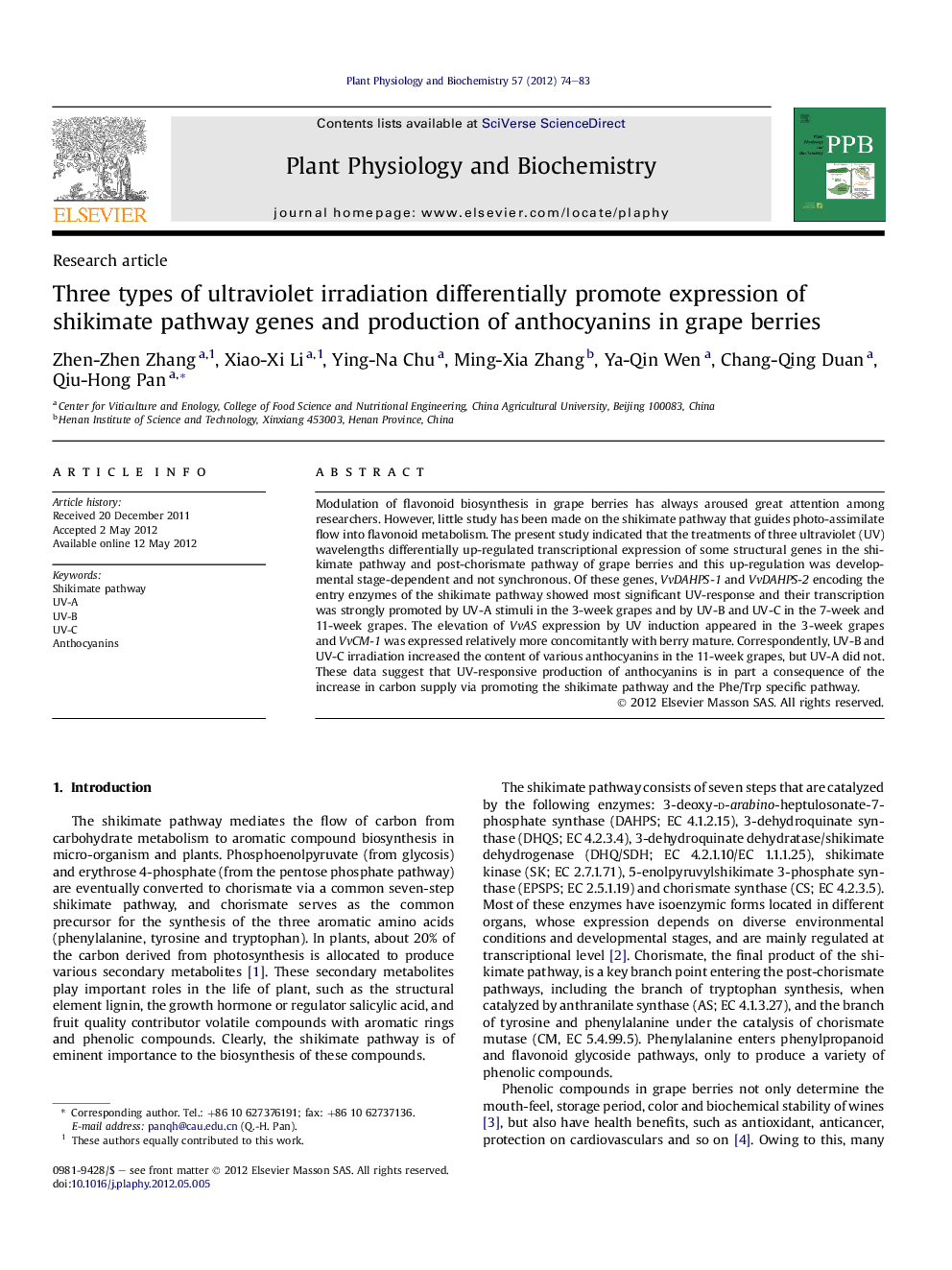| Article ID | Journal | Published Year | Pages | File Type |
|---|---|---|---|---|
| 2015008 | Plant Physiology and Biochemistry | 2012 | 10 Pages |
Modulation of flavonoid biosynthesis in grape berries has always aroused great attention among researchers. However, little study has been made on the shikimate pathway that guides photo-assimilate flow into flavonoid metabolism. The present study indicated that the treatments of three ultraviolet (UV) wavelengths differentially up-regulated transcriptional expression of some structural genes in the shikimate pathway and post-chorismate pathway of grape berries and this up-regulation was developmental stage-dependent and not synchronous. Of these genes, VvDAHPS-1 and VvDAHPS-2 encoding the entry enzymes of the shikimate pathway showed most significant UV-response and their transcription was strongly promoted by UV-A stimuli in the 3-week grapes and by UV-B and UV-C in the 7-week and 11-week grapes. The elevation of VvAS expression by UV induction appeared in the 3-week grapes and VvCM-1 was expressed relatively more concomitantly with berry mature. Correspondently, UV-B and UV-C irradiation increased the content of various anthocyanins in the 11-week grapes, but UV-A did not. These data suggest that UV-responsive production of anthocyanins is in part a consequence of the increase in carbon supply via promoting the shikimate pathway and the Phe/Trp specific pathway.
► Three types of UV differentially promote the expression of shikimate pathway genes. ► The entry enzyme of the shikimate pathway shows the strongest UV-response. ► The Phe/Try specific pathway is elevated by UV-B and UV-C radiation with berry mature. ► UV-responsive production of anthocyanins is related to the activation of the Phe/Trp specific pathway.
